In 2016, a video of Mac ‘n’ Cheez, a tiny kitten with paralyzed back legs, using a tiny “wheelchair” to test out his full zooming potential went viral. Since then, the handsome ginger cat has learned how to get around on two legs, with or without a harness or wheels.
Mac was found hiding in a discarded mac ‘n’ cheese box and brought to Massapequa Vet in Long Island, New York, where it was determined that his back legs were paralyzed due to nerve damage. His first brush with fame soon followed, when the clinic uploaded videos and pictures of him doing water therapy and trying out a custom-built wheeled harness made of Lego.
The tiny kitten was rescued from the streets in 2016
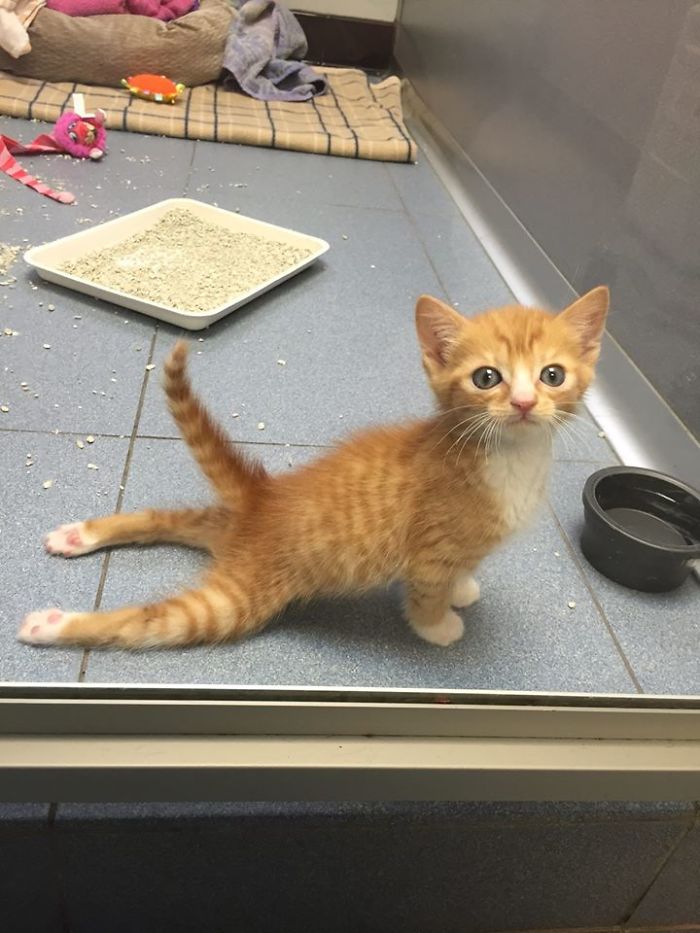
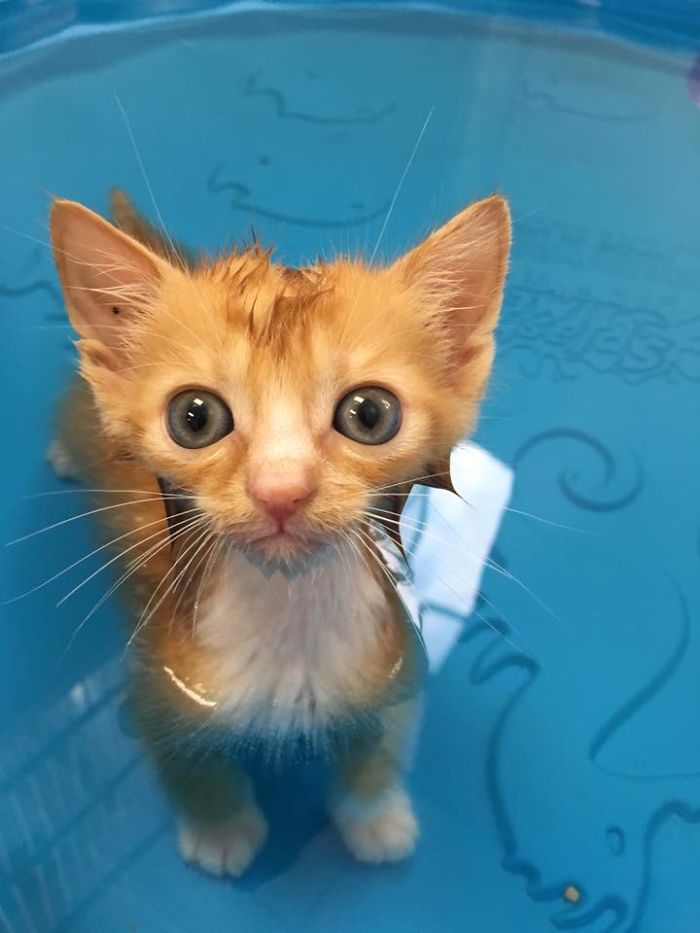
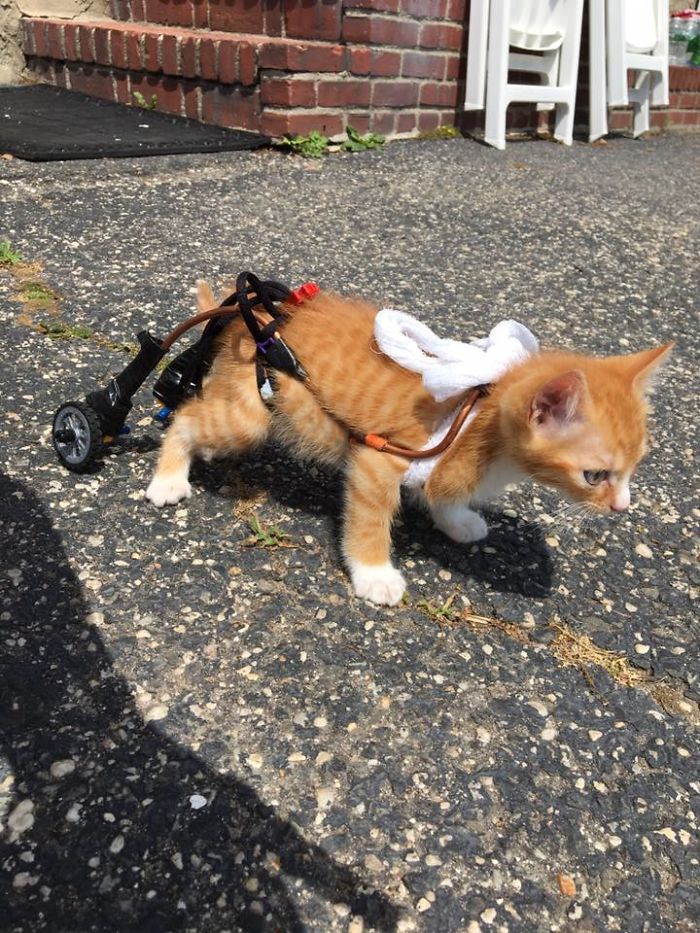
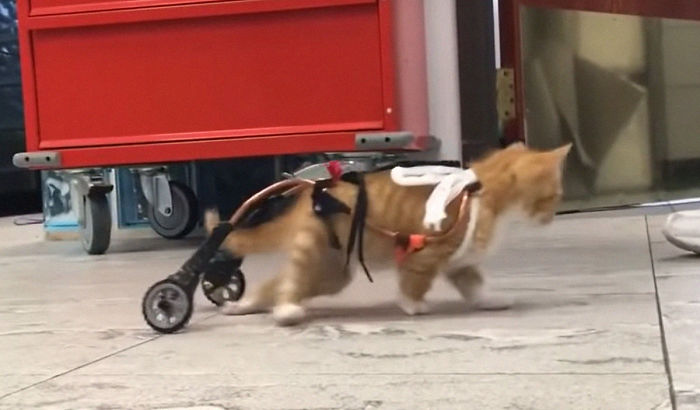
A video of him “zooming” with a wheeled harness made of repurposed building toys
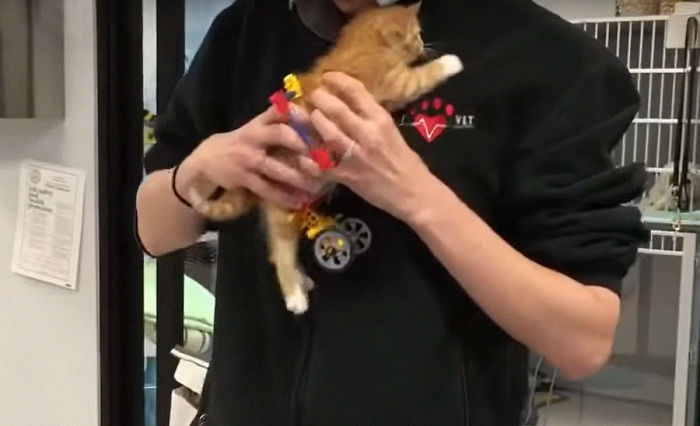
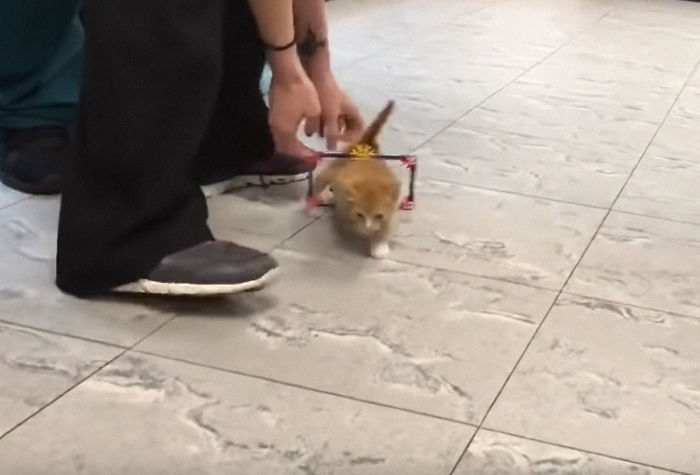
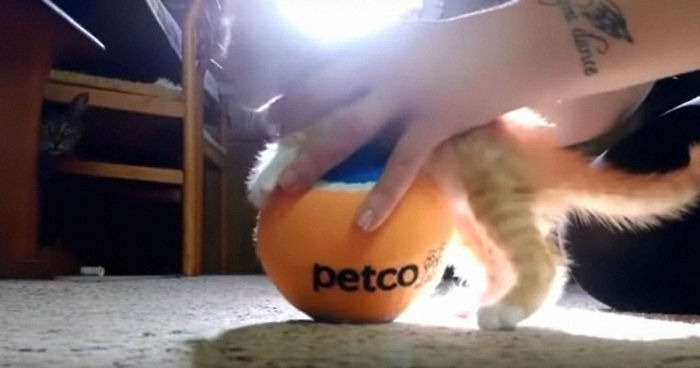
Wheels for disabled cats and dogs are nothing new, but most animals don’t use them indoors, as it’s not possible to maneuver in confined spaces, sit or lie down while using them. Cat wheelchairs are an option for taking a disabled pet out for a walk, as are slings assisted by the owner, especially for animals that have limited use of their hind legs and can stand on them to an extent. Mac, now almost 4 years old, sometimes puts his back feet under himself and stands up, but has little control over them and is more reliable at scooting using his front legs, which appear strong enough to climb onto furniture. As a result of the position of his back legs, he also has an almost human-like resting position.
The resourceful ginger cat has very strong front legs
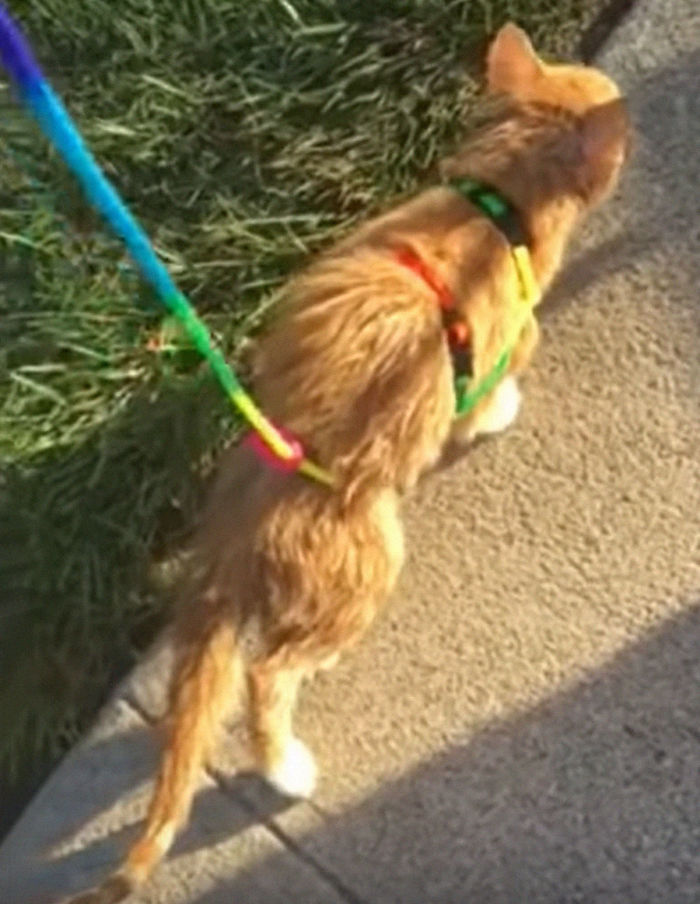
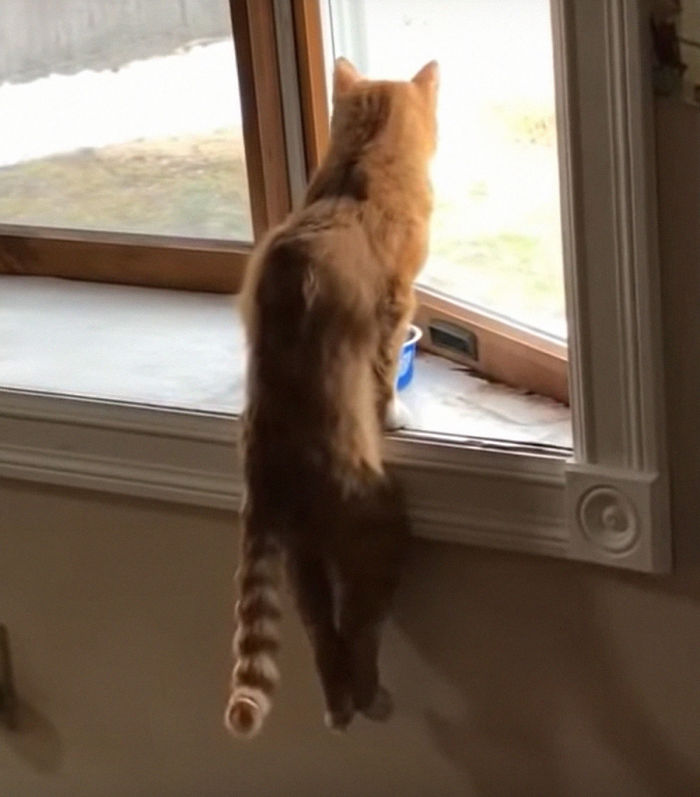

Caring for a cat with rear-leg paralysis comes with a number of challenges. Scooting around the house can cause injuries or wear and tear on the legs and hips, so for safe scooting, some owners put a specialized article of clothing called a drag bag or a scoot sack on their pet. Depending on the degree of feeling and control they have over their lower body, incontinence is also a common issue, with some paraplegic pets wearing diapers, or the opposite problem in which they have to be stimulated to do their business several times a day.
Caring for a paraplegic cat requires a dedicated owner
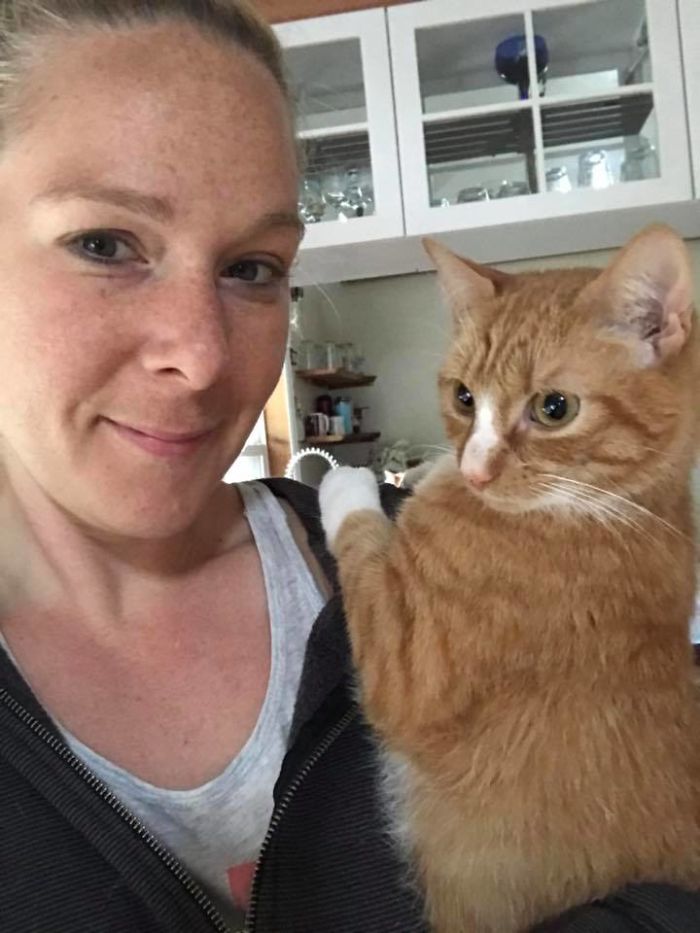
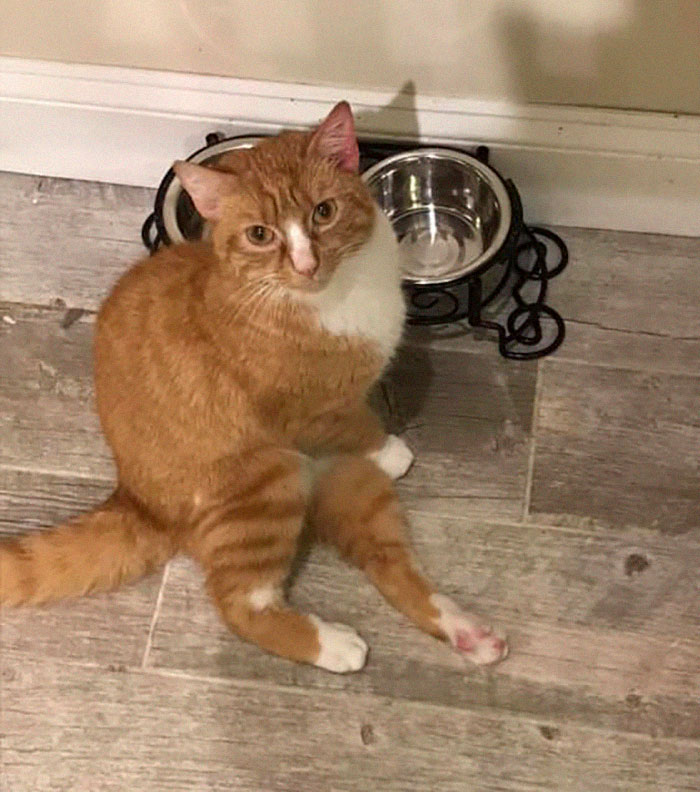
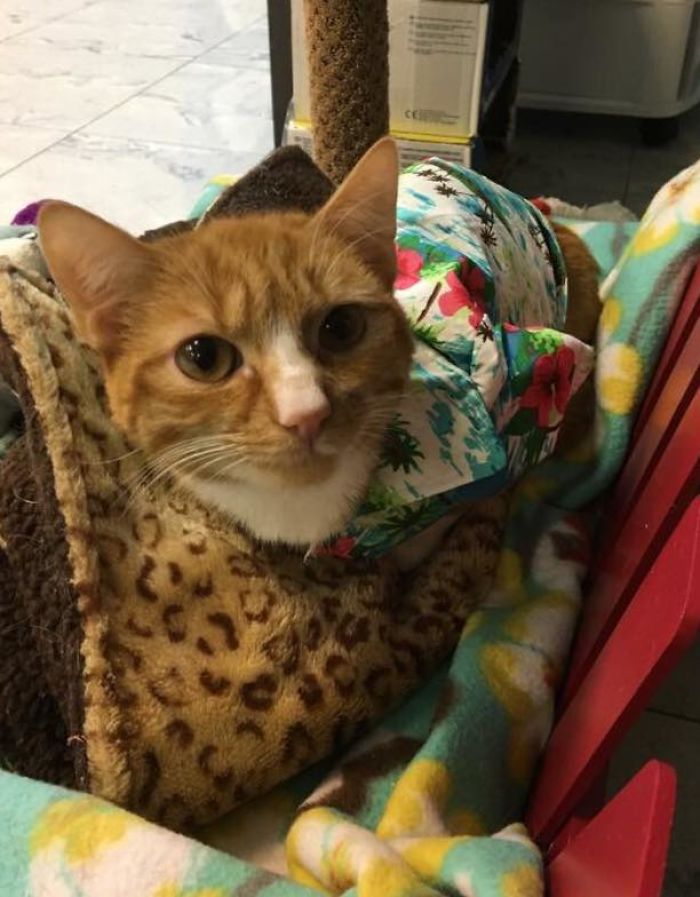
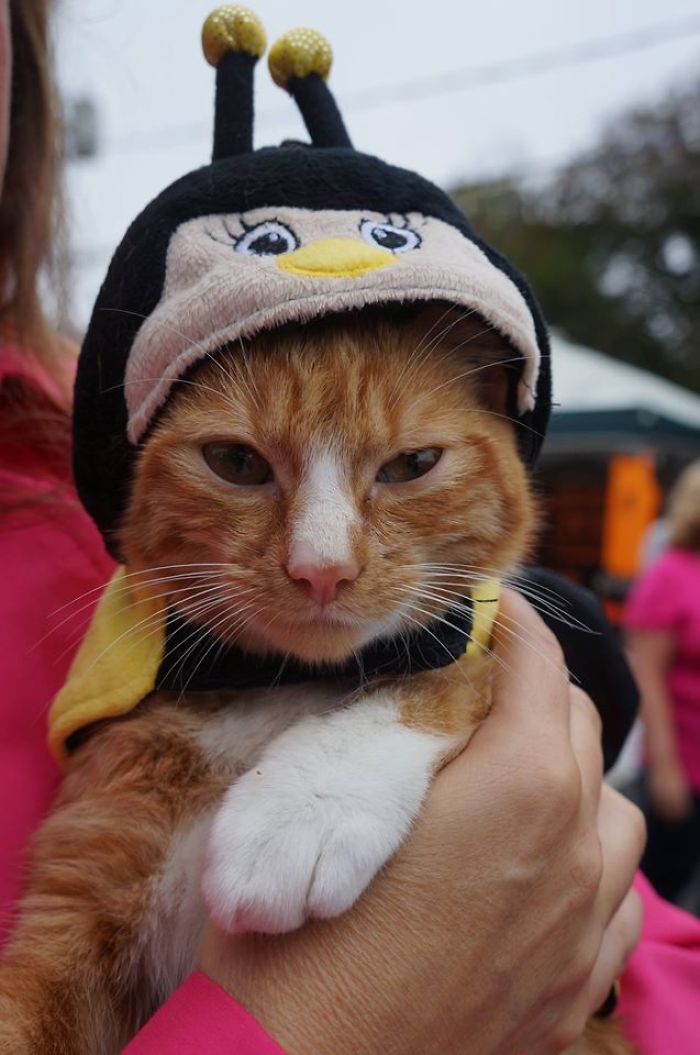
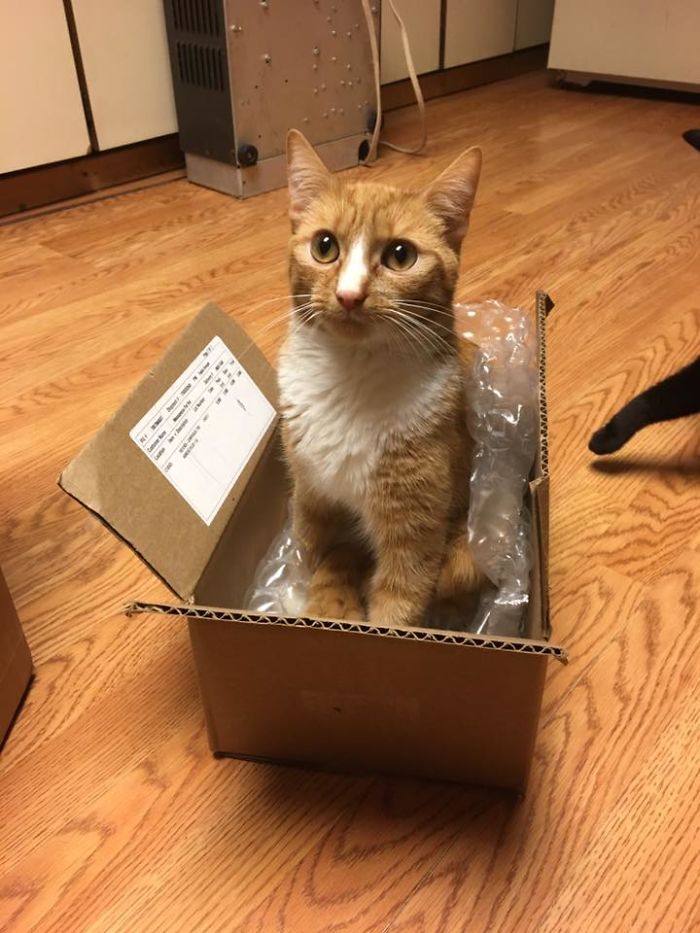
Despite the challenges of caring for a cat with rear leg paralysis, people who are willing to take on the commitment wouldn’t trade it for anything! Cats who get around on two legs have become therapy cats, like one cat on wheels who visits nursing home residents; office assistant cats, like this sociable fellow who keeps patients company at a vet clinic; and Instagram stars like Chloe, who scoots to the top of stairs and cat trees with ease.


